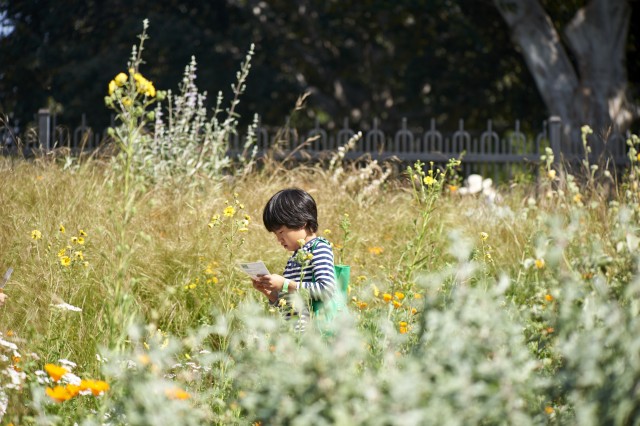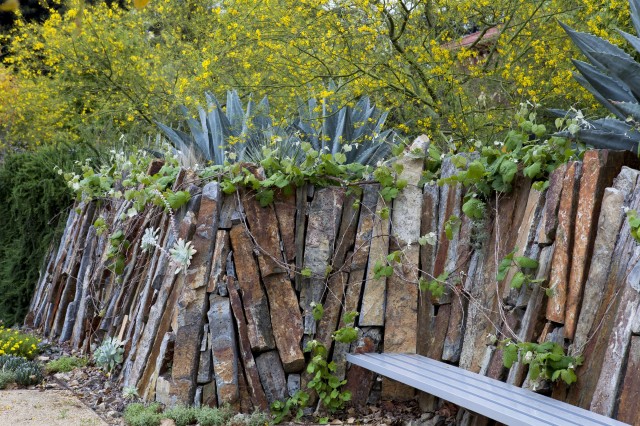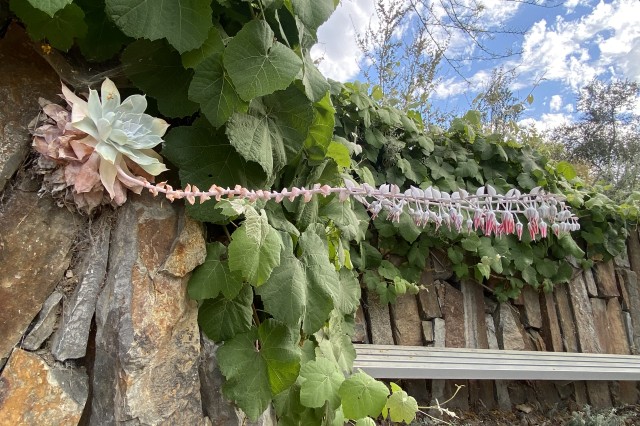The Hart Museum remains closed. Los Angeles County has approved a plan to transfer the William S. Hart Museum and Park from the County to the City of Santa Clarita.
Wildflower Power
The Museum's manager of horticulture, Daniel Feldman, has tips on how you can create a rainbow of super blooms in your garden this spring without guzzling too much water.
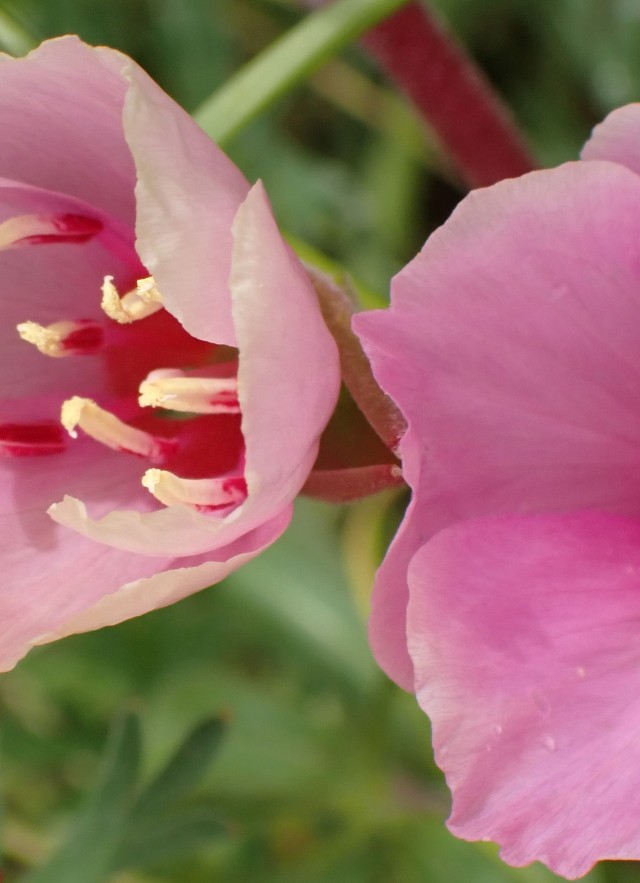
To produce your own wildflower super bloom, start by spreading seeds in bare, loose soil before a storm. After the seeds germinate, lightly water seedlings during dry periods (since they are small they don’t have a lot of reach to their roots). Once established they will not need much supplemental water. Sit back and enjoy the blooms!
And check out these wildflowers in the Pollinator Meadow in the Nature Gardens. While short-lived, they are a seasonal delight to gardeners and pollinators!
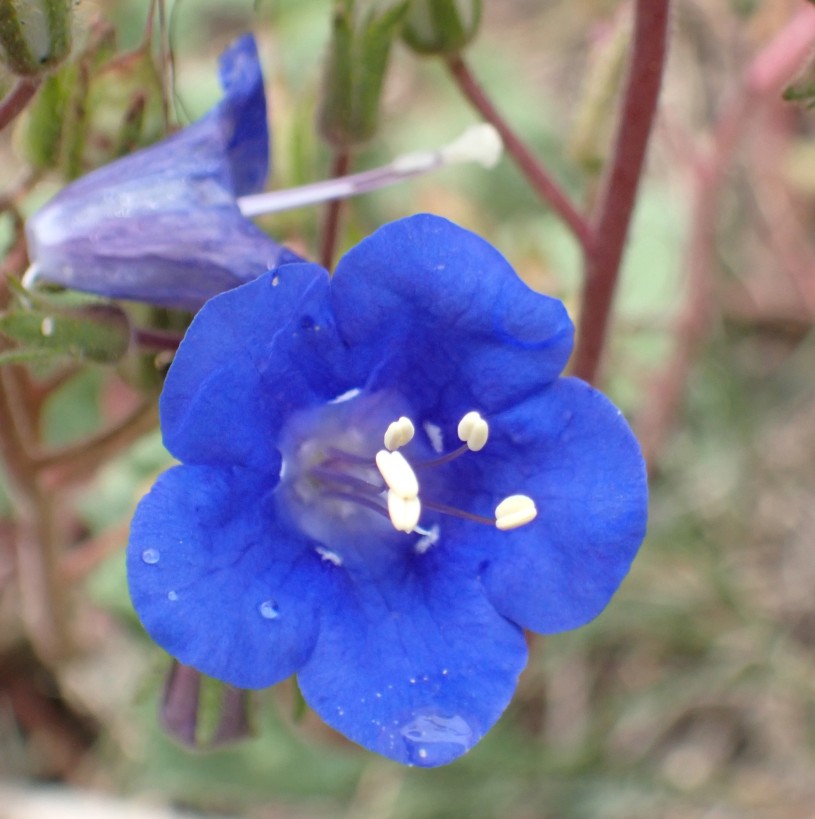
Phacelia tenacitifolia (tansy-leaf phacelia) and Phacelia campanularia (California bluebell) has beautiful purple-blue flowers with purple pollen that you can see the bees carry after visiting these flowers. They are hosts to many moth species including the White Lined Sphinx Moth.
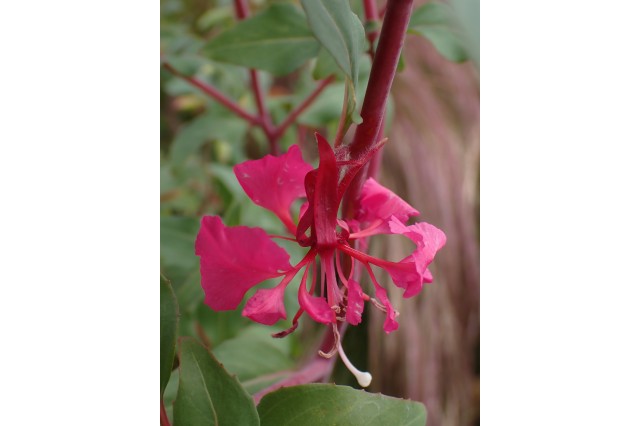
Clarkia unguiculata
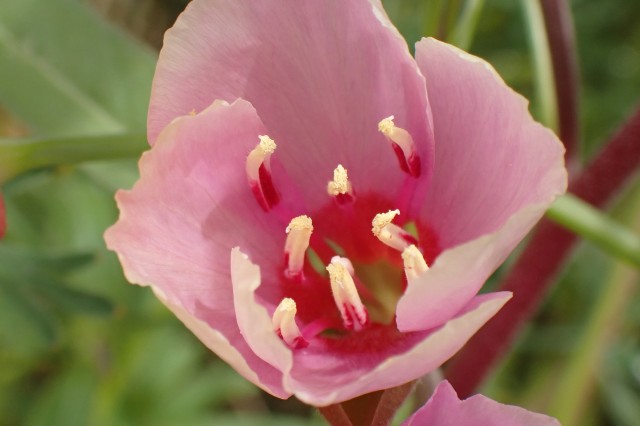
Clarkia amoena are commonly known as "farewell-to-spring" as they are often the last remaining wildflower in bloom. They are also a favorite food of the larvae of various Sphinx moth species!
1 of 1
Clarkia unguiculata
Clarkia amoena are commonly known as "farewell-to-spring" as they are often the last remaining wildflower in bloom. They are also a favorite food of the larvae of various Sphinx moth species!
We are growing four species this year: Clarkia unguiculata, amoena, purpurea, and bottae. They are commonly known as "farewell-to-spring" as they are often the last remaining wildflower in bloom. They are also a favorite food of the larvae of various Sphinx moth species!
We are growing several species of lupine this year: Lupinus ‘Ed Gedling’, sparsiflorus, bicolor, luteolus, and microcarpus. From the pea family, some species of lupine are perennial. After a rain, the divided leaves of Lupine hold a small ball of water in the center that shines like a jewel.
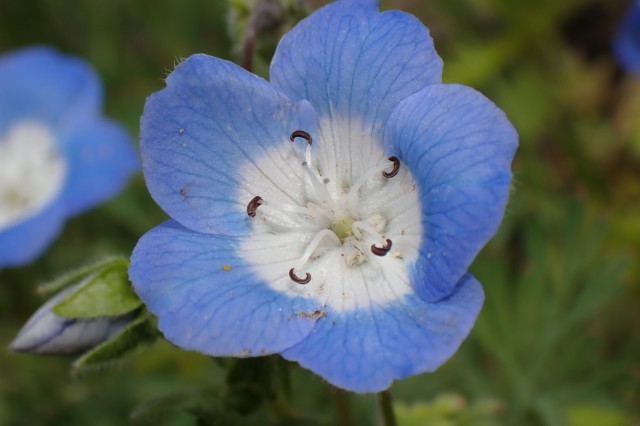
Nemophila menziessi (baby blue eyes)
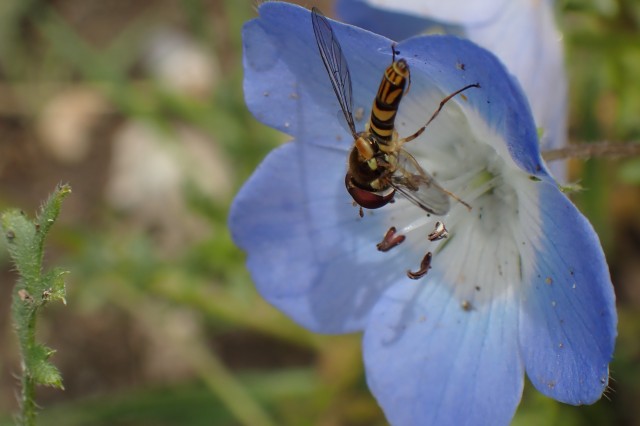
Nemophila menziesii (baby blue eyes)
1 of 1
Nemophila menziessi (baby blue eyes)
Nemophila menziesii (baby blue eyes)
Nemophila menziesii (baby blue eyes) is widespread throughout California with light blue flowers. Nemophila maculata (fivespot) is found on the west slope of the Sierra Nevada with white flowers and a purple spot on each of the five petals. They tolerate slightly wetter conditions and are generally successful in garden plantings.
Baileya multiradiata (desert marigold): One of the Nature Gardens Horticulturists’ favorites! It can persist into multiple seasons, so it is considered a perennial. Found mostly in the Mojave desert east of Los Angeles, the plant prefers rocky locations with fast drainage. Look for it on our Living Wall!
This is part of a series of drought-related videos in which our horticulture expert, Daniel Feldman, identifies five plants—for your garden and ours—that thrive in each season.
Check out his summer and fall 2022 picks.
Come by and meet these and other floral residents of our Nature Gardens!
